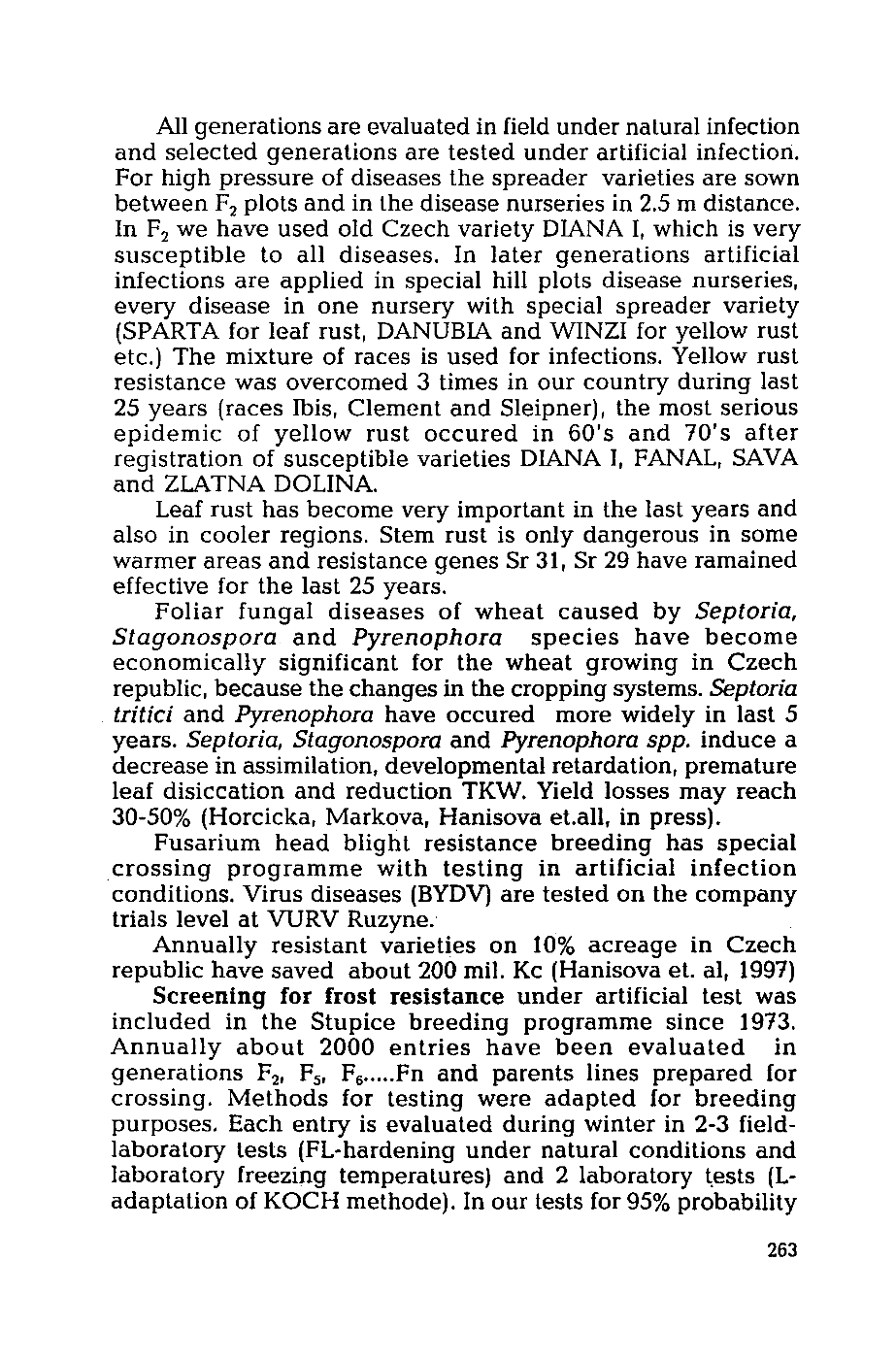

All generations are evaluated in field under natural infection
and selected generations are tested under artificial infection.
For high pressure of diseases the spreader varieties are sown
between F
2
plots and in the disease nurseries in 2.5 m distance.
In F
2
we have used old Czech variety DIANA I, which is very
susceptible to all diseases. In later generations artificial
infections are applied in special hill plots disease nurseries,
every disease in one nursery with special spreader variety
(SPARTA for leaf rust, DANUBIA and WINZI for yellow rust
etc.) The mixture of races is used for infections. Yellow rust
resistance was overcomed 3 times in our country during last
25 years (races Ibis, Clement and Sleipner), the most serious
epidemic of yellow rust occured in 60's and 70's after
registration of susceptible varieties DIANA I, FANAL, SAVA
and ZLATNA DOLINA.
Leaf rust has become very important in the last years and
also in cooler regions. Stem rust is only dangerous in some
warmer areas and resistance genes Sr 31, Sr 29 have ramained
effective for the last 25 years.
Foliar fungal diseases of wheat caused by
S e p t o r ia ,
S t a g o n o s p o r a
and
P y r e n o p h o r a
species have become
economically significant for the wheat growing in Czech
republic, because the changes in the cropping systems.
S e p to ria
t r it ic i
and
P y re n o p h o ra
have occured more widely in last 5
years.
S e p to ria , S ta g o n o sp o ra
and
P yre n o p h o ra
spp. induce a
decrease in assimilation, developmental retardation, premature
leaf disiccation and reduction TKW. Yield losses may reach
30-50% (Horcicka, Markova, Hanisova et.all, in press).
Fusarium head blight resistance breeding has special
crossing programme with testing in artificial infection
conditions. Virus diseases (BYDV) are tested on the company
trials level at VURV Ruzyne.
Annually resistant varieties on 10% acreage in Czech
republic have saved about 200 mil. Kc (Hanisova et. al, 1997)
Screening for frost resistance under artificial test was
included in the Stupice breeding programme since 1973.
Annually about 2000 entries have been evaluated in
generations F2, F5, F
6
....Fn and parents lines prepared for
crossing. Methods for testing were adapted for breeding
purposes. Each entry is evaluated during winter in 2-3 field-
laboratory tests (FL-hardening under natural conditions and
laboratory freezing temperatures) and 2 laboratory tests (L-
adaptation of KOCH methode). In our tests for 95% probability
263
Научная электронная библиотека ЦНСХБ









